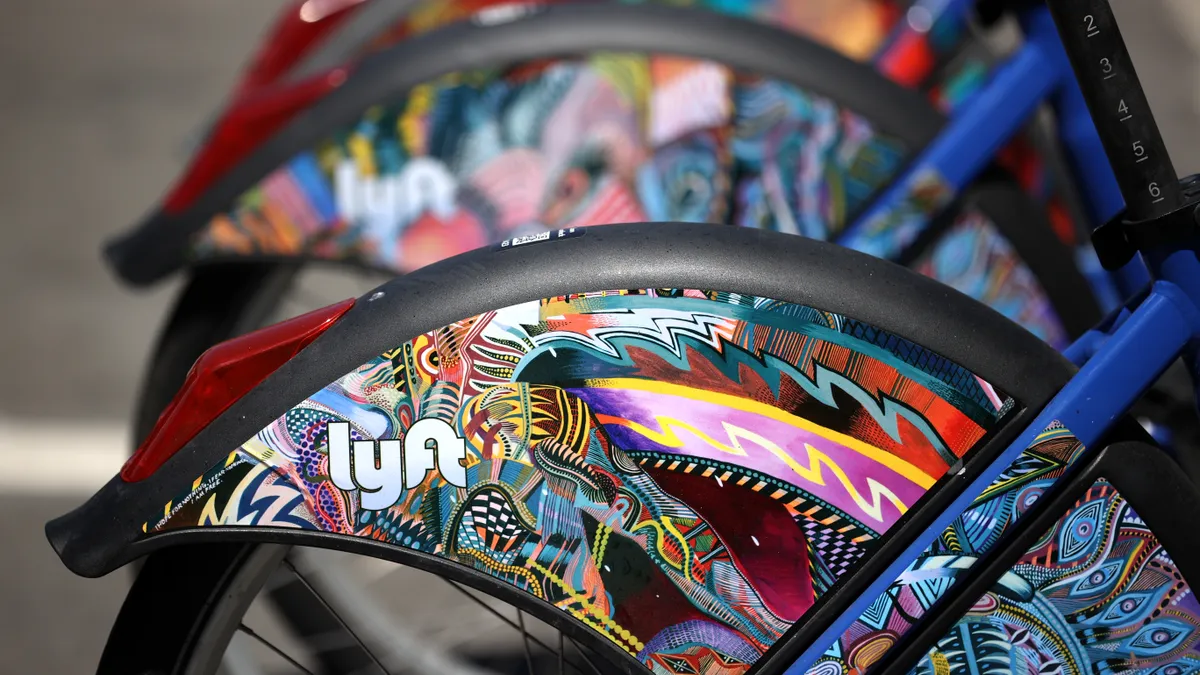Dive Brief:
- Cities should directly subsidize micromobility networks in order to make the shared bikes and scooters work in conjunction with public transit, Lyft Head of Transit and Micromobility Policy Caroline Samponaro said this week.
- Speaking Wednesday at the Micromobility World 2022 virtual conference, Samponaro said that public subsidies would be “critical” to helping micromobility companies deliver “great, city-wide service” even in less profitable, low-density neighborhoods. “For pennies on the dollar, you’re expanding the reach of the transit system and creating a connected network” for all city residents, she said.
- Earlier at the conference, Bird CEO Travis VanderZanden said cities also need to invest more heavily in bike and scooter infrastructure, especially adding parking, in order to boost the industry. “It still surprises me there is not one dedicated micro EV [electric vehicle] parking space on every city block,” VanderZanden said, adding that parking is “becoming the constraint” to growth.
Dive Insight:
Despite concerns that the COVID-19 pandemic would stall the industry’s growth, micromobility has boomed in the past year, cementing more relationships with cities and notching significant investor growth. Notably, Bird went public in a November deal that valued the company at $2.3 billion. An August report from McKinsey & Company found the market could reach a global consumer spending potential of between $300 billion and $500 billion by 2030.
To get there, however, VanderZanden said the industry will need to continue to innovate, with support from its city partners. In his first public appearance since Bird went public, the CEO said the industry is still waiting for its “iPhone moment,” or the technological breakthrough that will cement it as a revolutionary mobility form. That will include vehicle innovation beyond the e-bike and e-scooter, he said, as well as software innovation. Bird has also said it would use some of the revenue from its public debut to enter new cities.
Ultimately, VanderZanden said, the goal is to use micromobility to support a more sustainable mobility network that allows people to navigate short city trips without driving. “The gas car is really the ultimate competition,” he said.
Likewise, Lyft’s Samponaro said the company — which operates New York City’s CitiBike, the largest docked bike-share network outside of China — aims to “be more like a public transit system,” connecting all neighborhoods and parts of the city. Right now, she said, due to the economics of fleets, companies have to focus on dense neighborhoods with higher ridership, but it would be a public good to make sure vehicles are available beyond those high-profit areas.
That would require a shift from the industry’s early days of economic independence when many bristled at regulatory intervention. Samporano said the sector's growth would require "changes to the current approach," including a new look at funding and how micromobility can be integrated into the public right-of-way.
“At the end of the day, micromobility can be an accelerant or it can come to be seen as a reinforcement of two-wheeled things being an intrusion in the public right-of-way. I think we’re at a crossroads,” she said.
More cities have taken a hands-on approach to expand micromobility offerings, both by using pilot programs and regulations to spread them across the city or by integrating them into transit offerings. Pittsburgh, for example, made sure to include micromobility as part of its universal basic mobility push. However, cities have had to confront the reality that ridership is not equally distributed. Chicago, for example, reported last spring that its pilot showed limited ridership in certain low-income neighborhoods.
Samponaro said the industry and policymakers must weigh the best strategies for making micromobility work for all communities. “A lot’s at stake in figuring out how to make a program work in a mid-sized [or] small city for all of us,” she said. “The sign that we’re really healthy as an industry is if we see those examples and they’re successful.”











